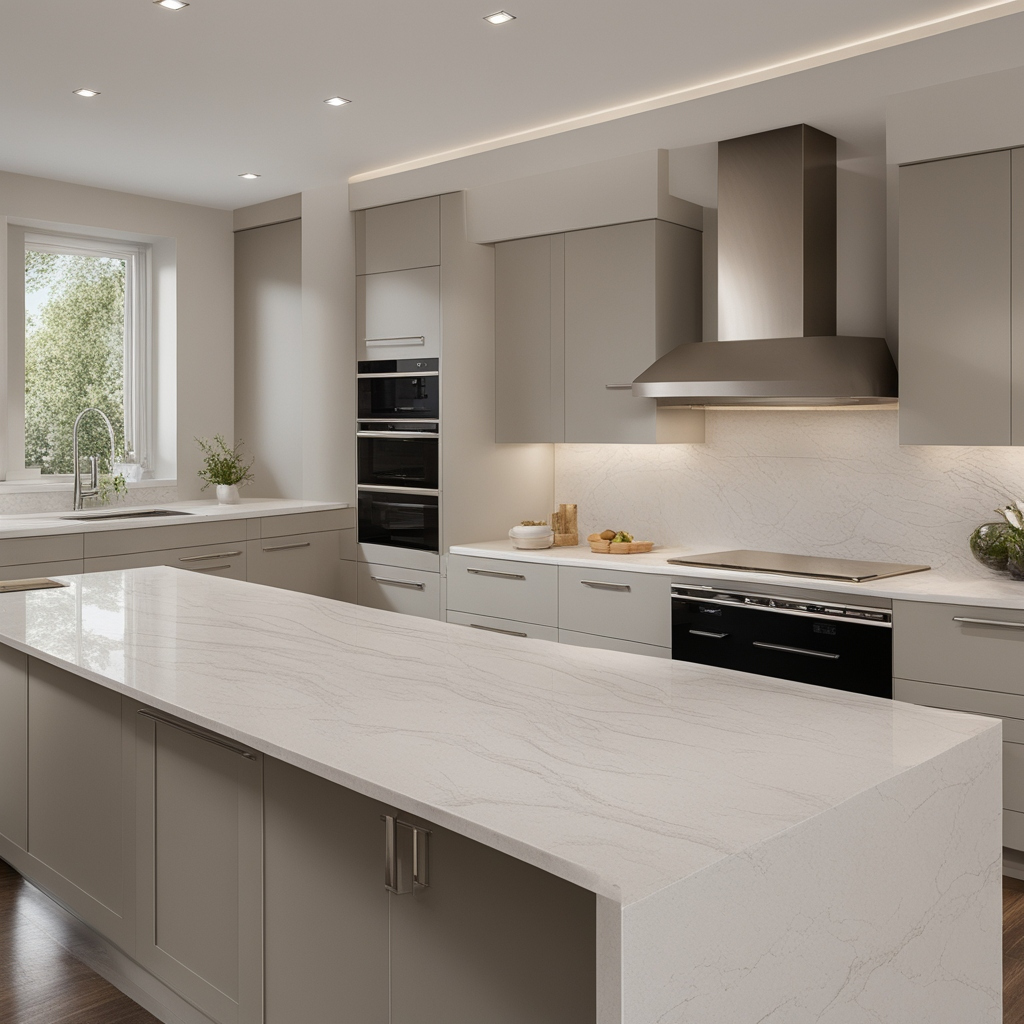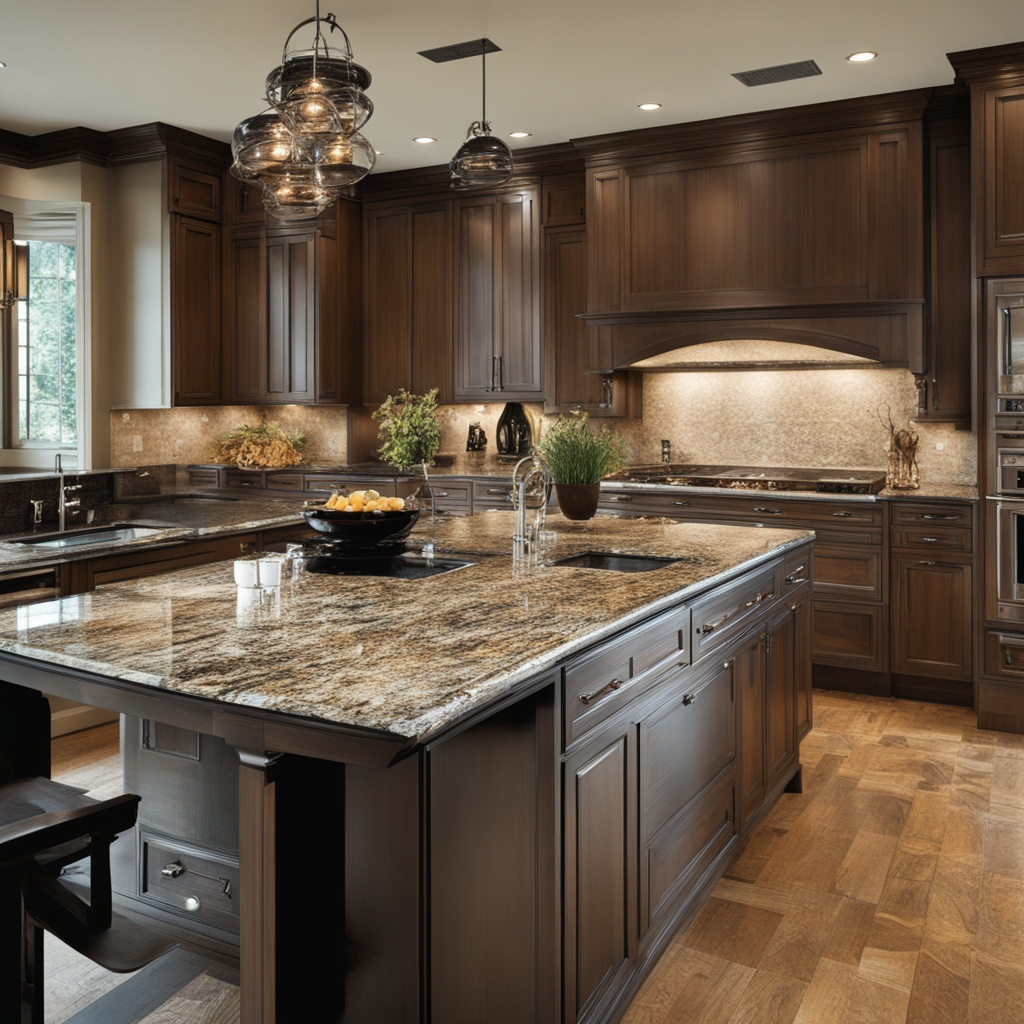
When it comes to choosing countertops for your kitchen, granite and quartz are two of the most popular options. Both materials offer distinct advantages and come with their own set of drawbacks. Understanding these can help you make an informed decision that aligns with your aesthetic preferences, lifestyle, and budget. Here’s a detailed look at the pros and cons of granite and quartz countertops in kitchens.

Granite Countertops
Pros:
- Natural Beauty: Granite is a natural stone, which means each slab is unique in color and pattern. This individuality can add a touch of natural elegance and luxury to your kitchen.
- Durability: Granite is incredibly hard and durable. It’s resistant to scratches and heat, making it an excellent choice for busy kitchens.
- Value Addition: Installing granite countertops can increase the resale value of your home. Many homebuyers look for granite when considering a property.
- Variety: Available in a wide range of colors and patterns, granite can complement almost any kitchen design.
Cons:
- Porosity: Granite is a porous material, which means it can absorb liquids if not properly sealed. This can lead to staining and bacteria growth.
- Maintenance: Granite countertops require regular sealing to maintain their appearance and durability. This is an additional task that homeowners need to keep up with.
- Cost: High-quality granite can be quite expensive, both in terms of material and installation.
- Weight: Granite is very heavy, which means your kitchen cabinets need to be strong enough to support the weight. This could potentially add to the overall renovation cost if additional support is required.

Quartz Countertops
Pros:
- Non-Porosity: Quartz is a non-porous material, which means it does not absorb liquids. This makes it highly resistant to staining and bacterial growth, contributing to a more hygienic kitchen surface.
- Low Maintenance: Quartz countertops do not require sealing. Regular cleaning with mild soap and water is sufficient to keep them looking new.
- Consistency: Unlike granite, quartz countertops offer more consistency in color and pattern. This can be beneficial if you want a more uniform look in your kitchen.
- Durability: Quartz is very durable and resistant to scratches, chips, and heat. It’s an excellent choice for high-traffic kitchen areas.
- Variety: Quartz is available in a wide range of colors and finishes, including options that mimic the look of natural stone, providing a broad spectrum of design possibilities.
Cons:
- Cost: Similar to high-quality granite, quartz can be quite expensive. However, the investment is often justified by its durability and low maintenance requirements.
- Heat Sensitivity: While quartz is heat resistant, it is not as heatproof as granite. Placing hot pots and pans directly on quartz countertops can cause damage.
- Appearance: Quartz lacks the unique, natural veining found in granite. Some people prefer the natural, varied look of granite over the more uniform appearance of quartz.
- Weight: Like granite, quartz is also heavy and requires sturdy cabinetry to support it, potentially increasing installation costs.
Conclusion
Both granite and quartz countertops offer substantial benefits and have their own set of challenges. Granite’s natural beauty and durability make it a timeless choice for many homeowners. However, its maintenance requirements and porosity can be drawbacks. On the other hand, quartz’s non-porous nature, low maintenance, and variety in design options make it a practical and stylish option, albeit at a high cost and with some sensitivity to heat.
When choosing between granite and quartz, consider your priorities: Are you looking for a unique, natural look that adds significant value to your home, or do you prefer a more consistent appearance with lower maintenance? Assessing your kitchen usage, design preferences, and budget will help you make the best choice for your space.




